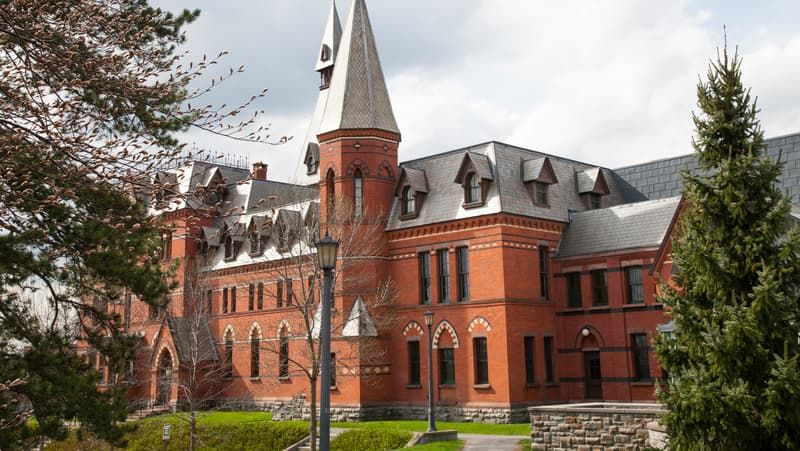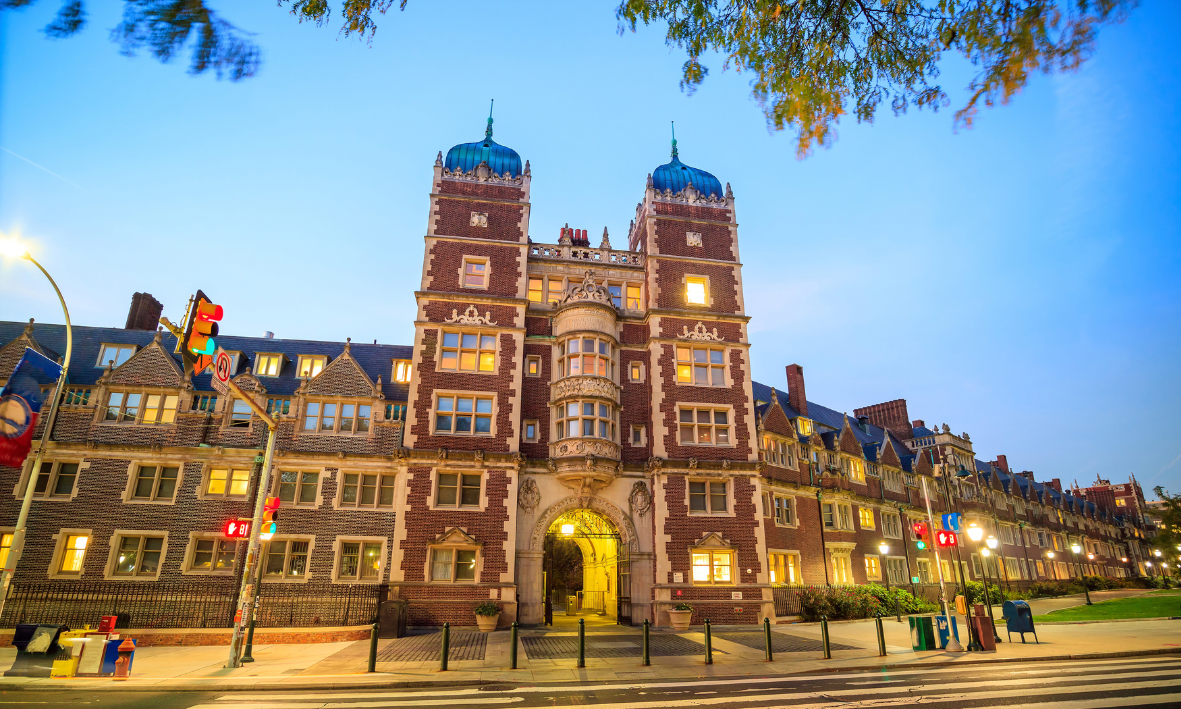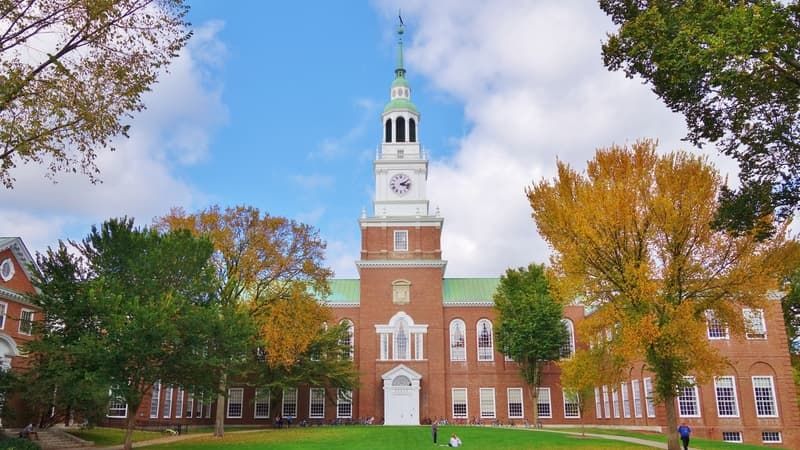Top 10 US Universities That Are NOT Ivy League Schools
Read now/f/64062/800x451/d6432e2c44/nonivy-share.jpg)
/f/64062/1000x563/a92750af60/easiest-ivy-league.jpg)
Jump To
Easiest Ivy Leagues
Hardest Ivy Leagues
Tips to Get In
It’s common knowledge that Ivy League schools are not only some of the most prestigious schools in the US but also eight of the hardest ones to get into.
But not all ivies are created equal - and some are harder to get into than others. This changes year by year depending on the number of applicants and available seats.
For this year, we’ve compiled a list of the easiest and hardest Ivy League schools to get into in 2024-2025.
Determining the easiest and hardest Ivy League school is subjective because each school specializes in certain areas, making getting into specific programs or majors harder or easier than others.
While no Ivy League school is easy to get into, some have slightly higher acceptance rates than others. This blog will use acceptance rates to determine which Ivy League schools are the easiest and hardest to get into.
| Ivies | Acceptance Rate |
|---|---|
| Cornell | 8.4% |
| Penn | 5.4% |
| Dartmouth | 5.3% |
| Brown | 5.2% |
| Princeton | 4.6% |
| Columbia | 3.8% |
| Yale | 3.7% |
| Harvard | 3.6% |
Ithaca, New York

| Overall Acceptance Rate | Early Acceptance Rate | Crimson Student Acceptance Rate |
|---|---|---|
| 8.4% | ~17.50% | 46.7% |
Cornell is considered the "easiest" Ivy League to get into because it has the highest Ivy League acceptance rate. While statistically speaking, it's easier to get into Cornell, it's still challenging.
It's also important to remember that students apply directly to one of Cornell's eight undergraduate colleges and each college has its own acceptance rate. If you want to see which of Cornell's colleges is the easiest and hardest to get into, check out their Institutional Research and Planning page.
How Max Got Into Cornell
Philadelphia, Pennsylvania

| Overall Acceptance Rate | Early Acceptance Rate | Crimson Student Acceptance Rate |
|---|---|---|
| 5.4% | ~14% | 38.6% |
UPenn only released its overall acceptance rate this year at 5.4%, making it the second easiest Ivy League to get into. While UPenn hasn't officially released their early admission data, our strategists estimate the early acceptance rate to be around 14%.
Like all Ivy League schools, UPenn is still highly selective. With a faculty to student ratio of 6:1, UPenn's intimate environment allows students to get individualized attention from some of the best teachers in the world.
How Ken Got Into UPenn Wharton with Crimson
Hanover, New Hampshire

| Overall Acceptance Rate | Early Acceptance Rate | Crimson Student Acceptance Rate |
|---|---|---|
| 5.3% | 17% | 30% |
Dartmouth College ranks as the third easiest Ivy League school to get into this year.
One of the reasons Dartmouth is a more accessible Ivy is because many students opt to submit their applications during the early decision round.
Dartmouth's early acceptance rate is significantly higher at 17.0%, despite an increase in early applicants, the school's early acceptance rate remains relatively high for a competitive university.
How I Got Into Dartmouth
Cambridge, Massachusetts
| Overall Acceptance Rate | Early Acceptance Rate | Crimson Student Acceptance Rate |
|---|---|---|
| 3.6% | 8.7% | 23.1% |
Harvard is the oldest institution of higher education in the US and consistently ranks #1 hardest Ivy League to get into. Founded in 1636, Harvard offers students a world-class education from some of the most brilliant professors in the world. Harvard is also centrally located near other prestigious universities like Boston University, MIT, Northeastern University, and Tufts University.
Harvard looks for self-motivated students who are ready to change the world. If you hope to attend Harvard, consider how you can add value to the campus community and how you'll carry the Harvard name out into the world
New Haven, Connecticut

| Overall Acceptance Rate | Early Acceptance Rate | Crimson Student Acceptance Rate |
|---|---|---|
| 3.7% | 9.0% | 26.7% |
With an overall acceptance rate of 3.7%, Yale University ranks as the second hardest Ivy League school to get into this year.
Yale’s single-choice early action option limits applicants to applying early to only one school in the Ivy League. This policy pushes students to carefully consider their top choice before applying, ultimately leading to a high caliber of applicants and maintaining Yale’s status as one of the most challenging Ivies to enter.
New York City, New York

| Overall Acceptance Rate | Early Acceptance Rate | Crimson Student Acceptance Rate |
|---|---|---|
| 3.85% | ~12% | 37.5% |
Columbia is the third hardest Ivy League to get into, with an acceptance rate of 3.85%. Students from around the world dream of studying at Columbia University. This prestigious university, located in the heart of New York City, is home to Columbia College, The Fu Foundation School of Engineering and Applied Science, and the School of General Studies. Originally called King's College by the royal charter of George II of Great Britain, it was renamed Columbia College in 1784.
If you want to get into Columbia, you should be a passionate learner in and out of the classroom. You should also consider its location in New York City and how you can utilize the city's vast resources.
Students around the world compete for coveted spots at Ivy League schools. If you want to get one of those spots, you have to stand out from the rest of the world's top students. But that's not easy! Here are three tips to boost your chances of getting into an Ivy League school.
Not all Ivies are the same. While they all share commonalities, each Ivy has its own "personality." As you research each school, you will find you're drawn to particular ones. You’ll discover certain schools offer programs that fit your career goals, clubs or organizations you're passionate about, or maybe they just feel more like home.
Don't pick a school just because it carries a prestigious name. Apply to the colleges that you can see yourself attending. Explain why that school needs you and how you will thrive on campus and in the community.
Applying early has many advantages! Statistically speaking, you'll have a higher chance of getting into an Ivy League if you apply early because the pool of applicants is much smaller. It might be challenging to get all the application pieces ready earlier, but it will be worth it. If you decide to apply early, carefully read each school's early-round requirements before applying. Some schools only allow you to apply to one school in the early round, and others require you commit to that school if you're admitted.
Most Ivy League applicants have stellar grades and high test scores. To stand out from the rest of the elite students, consider becoming an "expert" in a particular subject or activity. Admissions teams love seeing you grow, thrive, and lead in your area of interest.
Ivy League schools want to know that you can take your passions into your own hands, find success in the work, and serve the world around you.
Starting from fall 2025, many Ivy League schools are reinstating the SAT as a requirement for applying, so far this includes Harvard, Dartmouth, Brown, and Yale.
Submitting your SAT/ACT helps your application stand out, especially if you have a good SAT score.
If you decide to skip submitting your SAT test, the rest of your application needs to be stellar. However, even if the rest of your application is perfect, good SAT results will help it shine even more.
One of the most important aspects of your application is your extracurriculars, especially if you're applying to the Ivy League.
Instead of looking for applicants who have tried many different activities, Ivy League schools prefer applicants that commit deeply to a particular area, invest significant time, and demonstrate growth and impact through their pursuits.
Choose an extracurricular that reflects your genuine passion. It’s okay if your interests change down the line. What matters is showing you’re capable of impressive achievements now, as your current accomplishments are a promising sign of your future potential.
While statistically speaking, some Ivies are easier or harder to get into, you should apply to the Ivy League schools that fit your career goals and personality. If you apply to an Ivy only because it has the highest acceptance rate, you may miss opportunities at other Ivies and even non-Ivy League schools.
What Makes Crimson Different